DESIGN FRINGE 2024
Best bespoke design
Eugenie Kawabata
Botanica Exotica: Unknown Civilisations #2
Botanica Exotica: Unknown Civilisations #2 draws inspiration from the botanical world, particularly the interplay between the
exotic and native plant life that inhabit our urban parks and gardens. Through a nuanced exploration of these divergent narratives, the
vessel brings a talking piece to the table, inspiring connection, understanding and conversation.
Eugenie Kawabata is an independent, Melbourne based designer, artist and object maker. Her creative practice lies at the intersection of
art and design and in the innovation of crafting objects with an emphasis on materiality and sustainability. Her intention is to draw
attention to consumption, object disposability and the value of objects. Over the past five years, her focus has been on utilising
textile waste, giving rise to an ever-evolving collection of vessels, the 'Second Life' series. Kawabata has had a studio at the
Abbotsford Convent since 2014 and has participated in and curated exhibitions as part of Melbourne Design Week since 2017. In 2020, the
National Gallery of Victoria acquired a work from the 'Second Life' series. 'Botanica Exotica' was first showcased at Melbourne Design
Fair in 2023, before a larger exhibition, 'Botanica Exotica: Unknown Civilisations' at the Jam Factory, in Adelaide, South Australia,
May-July 2024.
Highly Commended Bespoke Design
Marta Figueiredo, Chronicles of Resilience
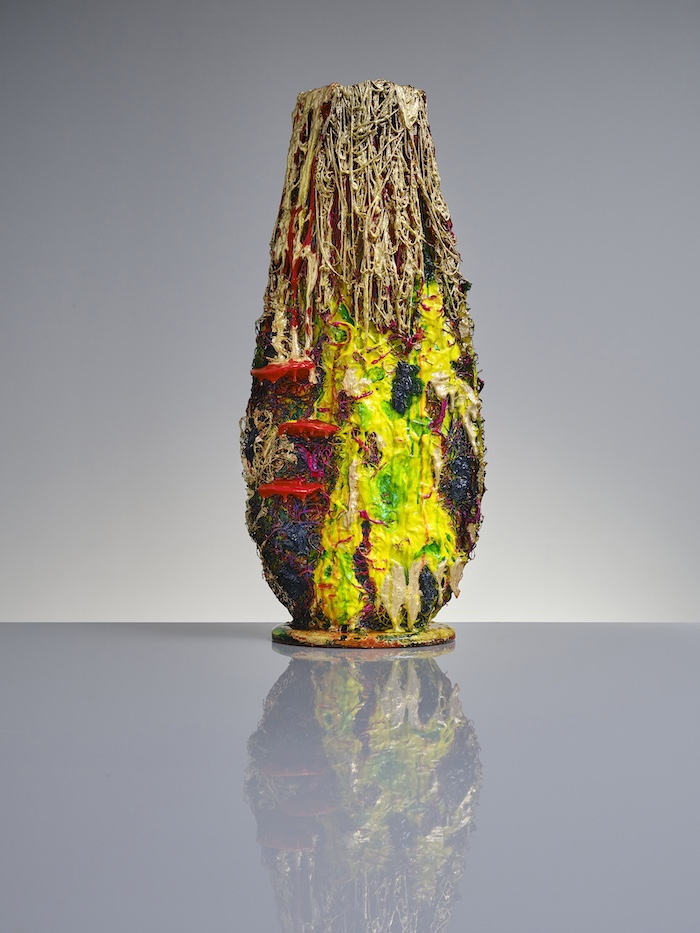
IMAGE > Eugenie Kawabata, Botanica Exotica: Unknown Civilisations #2, Fabric, Resin, Acrylic Paint, Mixed Media, 73 x 36 x
19cm. Courtesy of the artist.
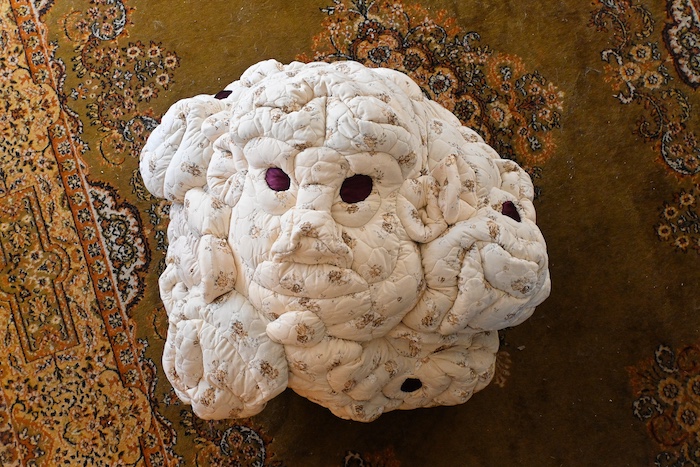
IMAGE > Evie Rosa, The Comforter, Pre-existing Quilt Cover, Textile Waste, Wood, 75 x 110 x 110cm. Courtesy of the artist.
Best experimental design
Evie Rosa
The Comforter
The Comforter explores the intimacy associated with beds and the interactions that unfold beneath the covers. Unlike the more
public dialogues of spaces like the dining room table, the conversations that happen in bed are dreamlike, hushed, and softer. By
repurposing an existing quilt cover, 'The Comforter' aims to personify our relationship with our beds, offering a deep engagement with
the material and emotional layers that shape our experiences of comfort and vulnerability. Evie Rosa is an emerging creative
practitioner who adopts an interdisciplinary approach to textile design and production. She aims to expand the way fashion and design
processes can foster more responsive practitioners capable of responding to the challenges in production and consumption systems in
contemporary society. Her work is intrinsically reflexive through its disruption of internality and externality, forcing analysis of the
alterity of human experience in relation to non-human factors like a bed.
Highly Commended Experimental Design
Edie Kurzer, The Baubles are coming for dinner – what’s for bricolage?
best in furniture
Britt Salt
Turning the Grid (I and II)
Turning the Grid I & II occupy a space between furniture and sculpture. Made from powder coated stainless steel, their
height is that of a standard bench seat with room for two people to sit. But their curved base means they easily tip and rock from side
to side when touched. The instability of these objects signals a turning or divergence from a controlled environment. When two people
move to sit down on a form together, they must do so in sync, finding balance in space and a reciprocal support from each other’s body.
Britt Salt works across sculpture, textiles, drawing, installation and public art. Her works are complex in their construction and
minimal in aesthetic, exploring site-specific and imagined architectures. Britt uses intuitive geometry and hand-crafted methodical
processes to trace the intricacies of order in public and private space. Seeking to unearth latent possibilities within ordered
constraints, and control within disorder. Britt Salt grew up on Yamatji Country in Geraldton, WA and is now based in Naarm/Melbourne. She
has exhibited at CRAFT; Town Hall Gallery; Hazelhurst Regional Art Gallery; and PICA. She has received prestigious awards such as the Art
& Australia Emerging Artist Award, and Freedman Foundation Travelling Scholarship. The artist has undertaken residencies at the
Australian Tapestry Workshop; Youkobo, Japan; and Red Gate Gallery, Beijing. She has created major public artworks for Melbourne
International Airport, Tsinghua University Beijing, and Fender Katsalidis Architects. Salt holds a Masters of Contemporary Art from VCA.
Her work is held in collections including Wangaratta Art Gallery; University of Melbourne; Justin Art House Museum; and Artbank.
Highly Commended Furniture Design
Carl Broesen, Rope Lounger
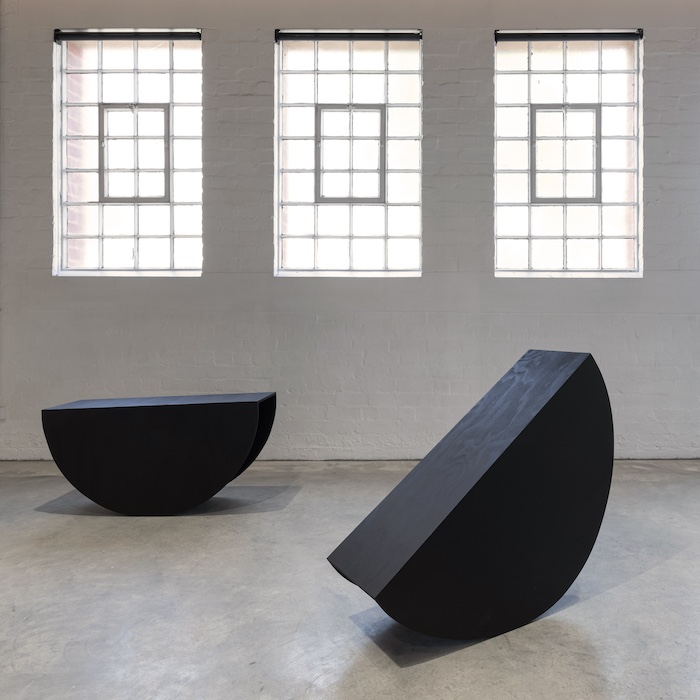
IMAGE >Britt Salt, Turning the Grid (I & II), 2024, Powder Coated Steel, 47.5 x 95 x 25cm. Courtesy of the artist.
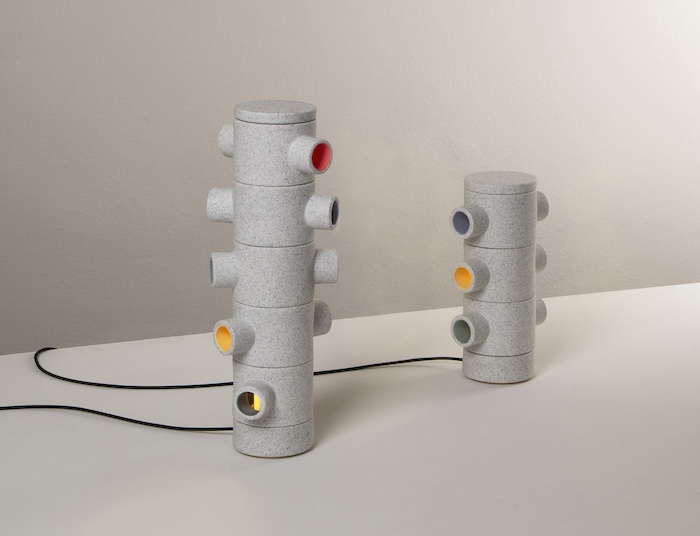
IMAGE > Richard Greenacre, Crux (Quintet & Trio), Australian Porcelain, Brass, Acrylic, LED, 35 x 12 x 6cm/18.5 x 12 x
6cm. Courtesy of the artist.
Best lighting design
Richard Greenacre
Crux (Quintet & Trio)
Crux is a table lamp crafted to inspire interaction and play. Cast from fine Australian porcelain, the lamp invites users to engage
with its form through stacking interlocking modules, enabling the creation of unique colour combinations and shapes. Each section can be
rotated to direct the orientation of light and change the overall form of the lamp. Crux encourages not only individual creativity
but also collective exploration, fostering togetherness as users collaborate in configuring the lamp to suit their shared space. Crux
is not just a source of light; it’s a catalyst for conversation, curiosity, and connection. The playful form invites you to engage with
it, to touch, twist, and explore, making the act of turning on a lamp a delightful experience in itself.
Richard Greenacre is a Naarm/Melbourne based industrial designer whose work encompasses furniture, lighting and object design. His design
approach is grounded in material experimentation and research, and places emphasis on hands-on experience and the act of designing through
making. Over the last decade Greenacre has been increasingly focused on exploring the material possibilities of clay, creating work that
dwells in the liminal space between Industrial Design and Craft.
Highly Commended Lighting Design
Kaspian Kan, Six Sticks
best object design
Makushla Harper
Sobremesa Cup Set
The Sobremesa Cup Set is named after the Spanish word for languid afternoons following lunchtime, in the golden summer sun, and was
designed to encourage new movement patterns and ways of interaction. The polished stainless steel surfaces glint and gleam in the long
afternoon light, reflecting sparkles in eyes from easy laughter. The work has been designed for outdoor dining; each cup hooks onto a
pack or branch, rather than sitting on a table, therefore the contents must be consumed before setting the cup down. The Sobremesa Cup
Set
is made for subdued soirees on a patio, through to multi-day treks through the mountains. The user can cradle the Sobremesa cup in
two hands, with a warm coffee or cocoa, elegantly hold wine in a single hand, stand the cup upright by pushing the handle into soil or
sand, and roll the cup along the ground.
Makushla Harper is an emerging Industrial Designer from Tasmania, now based in Melbourne. Her design methodology centres around texture
and tactile experience, leaning heavily on physical prototyping to find new ways of working with existing materials. She finds
inspiration in the outdoors as an avid hiker, boulderer and adventurer. She is a graduate of RMIT Industrial Design, and currently works
as a lighting designer and sessional lecturer.
Highly Commended Object Design
Bridget Saville, Of Which We Are Made
Rebecca George, Material Memory
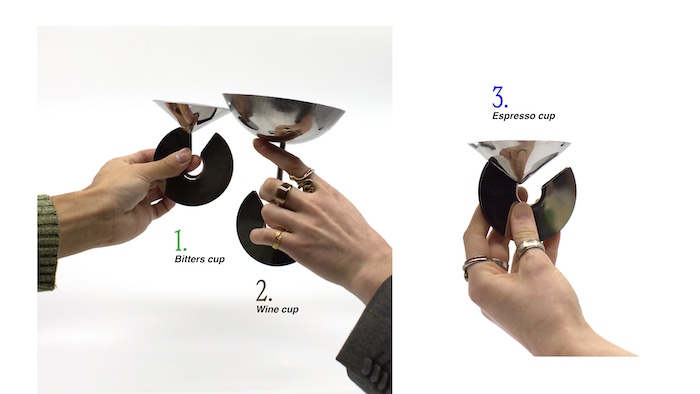
IMAGE > Makushla Harper, Sobremesa Cup Set, Stainless Steel, 10 x 7 x 7cm. Courtesy of the artist.
ADA Design Futures Award
Carl Broesen
Loom Lounge
Carl Broesen’s works re-imagine functional furniture as a catalyst for connection and shared experiences, in line with the theme "We have
shared bread and salt." The Loom Lounge invites people to gather and sit together, its woven structure symbolizing the coming
together of diverse materials—just as shared meals bring people closer. This piece is designed to transform everyday moments into
opportunities for deeper connection, reflecting the essence of shared bread and salt in building community.
Carl Broesen is a furniture, lighting, and object designer-maker based in Melbourne (Naarm). He enjoys being in the workshop crafting new
and interesting objects that reflect the value of sustainability with poetic and functional merit. He believes design plays a pivotal
role in shaping the world we live in, and with it a responsibility for designers to solve problems that ultimately benefit the planet and
everything in it. Whilst studying a Bachelor of Design in product design, Broesen dived into the design industry working as a concept
designer and fabricator working with acclaimed designers, most notably Adam Goodrum and Patryk Koca. Since graduating, he has worked
across the design field from architectural model making through to furniture prototyping and design resolution. Currently working in the
design & production development team at Tait outdoor furniture, he is heavily involved in all stages of the design process from
concept to product delivery and ongoing development. Alongside this, he continues to develop his own products through his practice Carl
Broesen Studio.
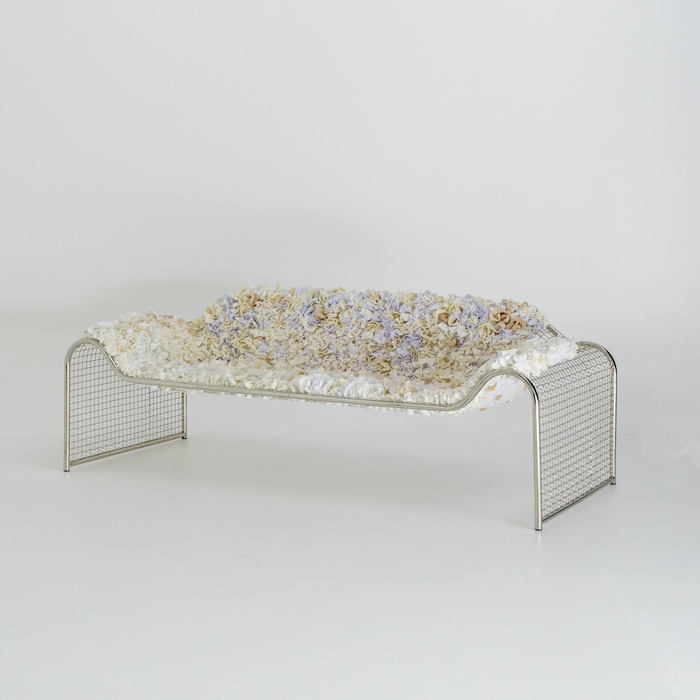
IMAGE > Carl Broesen, Loom Lounge, Cotton, Polyester, Wool, Felt, Nickle plated Steel, 76 x 200 x 81cm. Courtesy of the artist.
People's Choice Award
SARAH TRACTON & DR IAN WATKINS
When Art and Science Collide
When artists and scientists collaborate, the fusion of creativity and precision leads to unexpected results. In this light installation,
artist Sarah Tracton and scientist Dr Ian Watkins form a unique meeting of minds. Tracton meticulously crafts porcelain sheets, pouring them
layer by layer onto plaster slabs before firing them at 1280 degrees. Watkins, with his lifelong expertise in electronics, builds the
internal mechanisms that bring the lights to life. Their collaboration is a dance between art and science, where each discipline enhances
the other. The porcelain sheets, prone to breaking during the intense firing process, are painstakingly repaired using the ancient Kintsugi
gold leaf technique, embracing idiosyncratic imperfections as part of the design. The result is a series of lights that emit a celestial
glow, combining finely engineered electronics with the organic beauty of handcrafted porcelain—a true alchemy of collaboration.
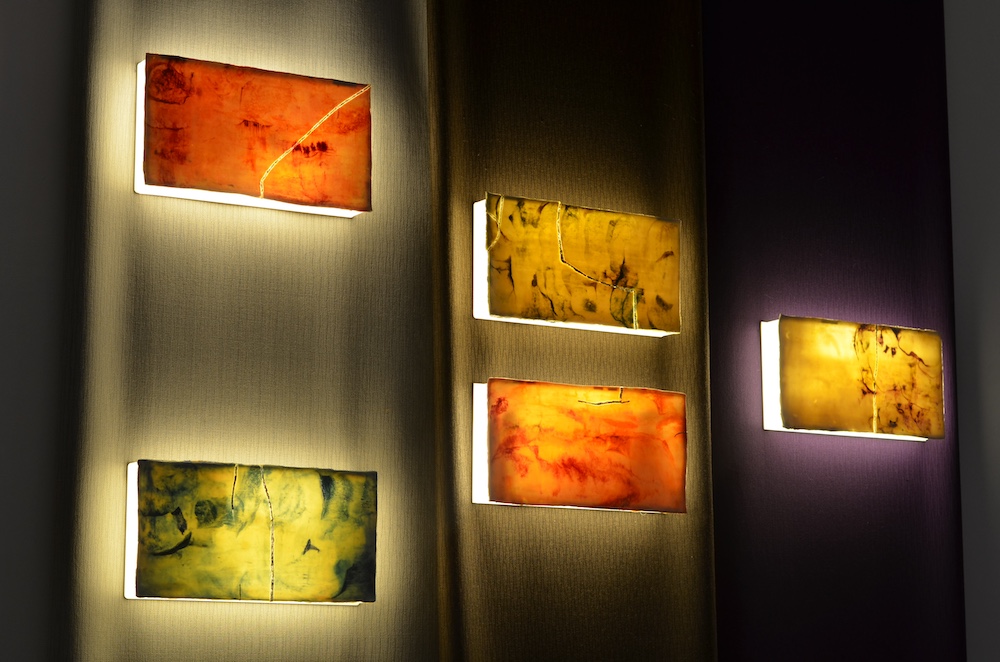
IMAGE > Sarah Tracton & Dr Ian Watkins, When Art and Science Collide, 2024 Porcelain, Perspex, LED, Gold Leaf, Fabric
Backdrop. Courtesy of the artist.
